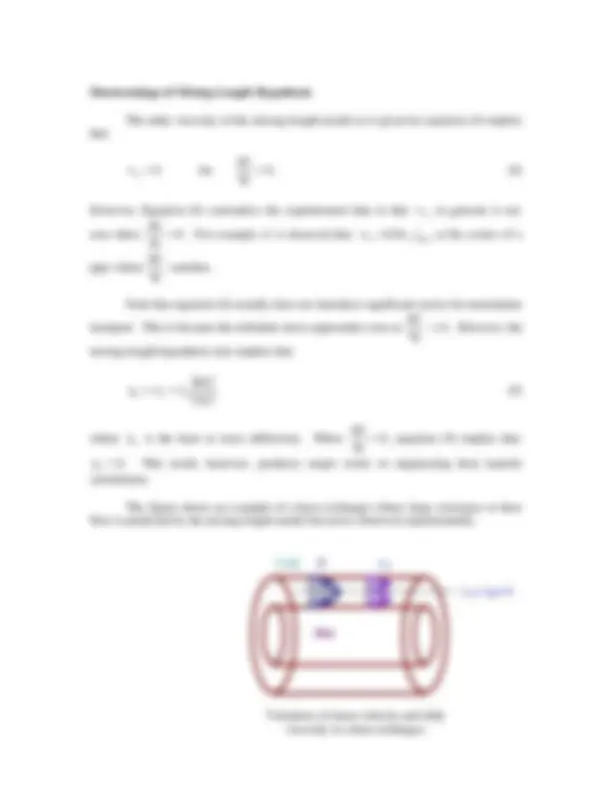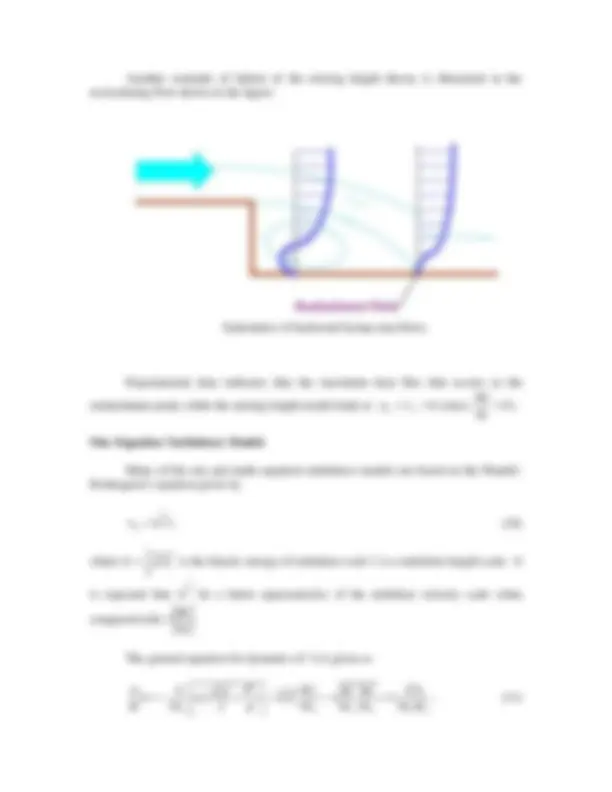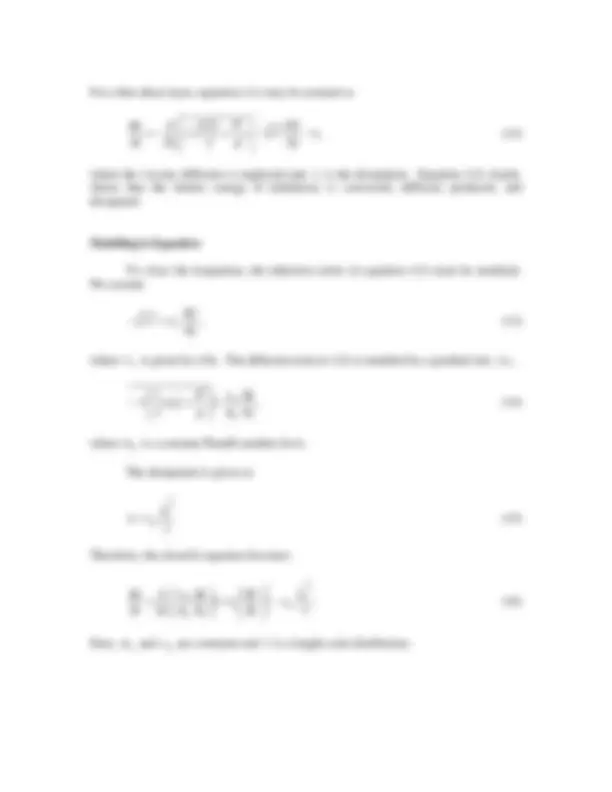





Study with the several resources on Docsity

Earn points by helping other students or get them with a premium plan


Prepare for your exams
Study with the several resources on Docsity

Earn points to download
Earn points by helping other students or get them with a premium plan
Community
Ask the community for help and clear up your study doubts
Discover the best universities in your country according to Docsity users
Free resources
Download our free guides on studying techniques, anxiety management strategies, and thesis advice from Docsity tutors
Describes in shortcoming of mixing length hypothesis, one-equation tubulence models, modeling K-equatins and distribution length of scale.
Typology: Lecture notes
1 / 7

This page cannot be seen from the preview
Don't miss anything!




The general form of the Boussineq eddy viscosity model is given as
k 3
x
x
u u ij i
j
j
i i j T − δ
− ′ ′=ν , um um 2
k = ′ ′ , (1)
where ν (^) T is the eddy viscosity. For thin shear layer, the relevant component of (1) may
be restated as
y
u v T ∂
− ′ ′=ν. (2)
Prandtl assumed that ν (^) T ~ ulm, where u is a turbulent velocity scale and l (^) m is referred
to as the mixing length. Furthermore, Prnadtl postulated that
y
u ~ m ∂
l , (3)
and hence
y
T m ∂
ν =l , y
y
u v
2 m ∂
− ′ ′=l. (4)
The mixing length l (^) m depends on the nature of the flow and, in general, is space
dependent.
For free shear flows, l (^) m is proportional to the half-width of the shear layer l. For
different flows, the mixing lengths are given as
l (^) m = 0. 09 l, for plane jet,
l (^) m = 0. 075 l, for circular jet, (5)
l (^) m = 0. 07 l, for mixing layer.
For boundary layer flows, several different forms were suggested. For instance, Escudier
(1966, Imperial College Report) assumed
Variation of mean velocity and mixing length
in a turbulent boundary layer
κ
κ ≥ δ
κδ
κ
κ ≤ δ
κ
= 0 0
0
m (^) y
y y
l. (6)
where κ = 0. 41 and κ 0 = 0. 09.
1 U/Uo
m
κ (^) o / κ 1
For pipe flows, Nikuradse suggested the following expression:
4
0
2
0 0
m
r
y
y
l , (7)
where r 0 is the radius of the pipe.
Variation of mixing length in a turbulent pipe
flow according to Nikuradse.
Another example of failure of the mixing length theory is illustrated in the
recirculating flow shown in the figure:
Experimental data indicates that the maximum heat flux that occurs at the
reattachment point, while the mixing length model leads to γ (^) T =νT= 0 (since 0 y
One-Equation Turbulence Models
Many of the one and multi-equation turbulence models are based on the Prandtl-
Kolmogorov equation given by
(^2) l
1 νT =k , (10)
where ui ui 2
k = ′ ′ is the kinetic energy of turbulence and l is a turbulent length scale. It
is expected that 2
1
k be a better representative of the turbulent velocity scale when
compared with y
l.
The general equation for dynamics of k is given as
j j
2
j
i
j
i
j
i i j
i i j j x x
k
x
u
x
u
x
) uu
uu u( x
k dt
d
∂ ∂
+ν ∂
−ν ∂
ρ
Reattachment Point
Schematics of backward facing step flows.
For a thin shear layer, equation (11) may be restated as
− ε ∂
ρ
y
) uv
uu v( dt y
dk (^) i i , (12)
where the viscous diffusion is neglected and ε is the dissipation. Equation (12) clearly
shows that the kinetic energy of turbulence is convected, diffused, produced, and
dissipated.
Modeling k-Equation
To close the k-equation, the unknown terms in equation (12) must be modeled.
We assume
y
u v T ∂
− ′ ′=ν , (13)
where ν (^) T is given by (10). The diffusion term in (12) is modeled by a gradient law. i.e.,
y
P k uu 2
v k
T i i ∂
σ
ν =
ρ
where σ (^) k is a constant Prandtl number for k.
The dissipation is given as
l
2
3
D
k ε =c (15)
Therefore, the closed k-equation becomes
l
2
3
D
2
T k
T (^) c k y
y
k
dt y
dk −
+ν
σ
ν
∂
Here, σ (^) k and c (^) Dare constants and l is a length scale distribution.
y
u
y
κ
*^2 − u ′v′= u. (23)
Using (23) in (22) and solving for l , we find
m
4
1
D
4
1
l = cD κy=c l (24)
For cD = 0. 08 , κ = 0. 4 , we find
l = 0. 2 y (25)
It was suggested that to use equation (24) in the entire flow domain with lm
given by an empirical mixing length expression. Nikuradse's equation given by (7) has
been used extensively. In immediate vicinity of the wall, further modification for viscous
effects are needed.
Achievements of the Model
Heat transfer in the heat exchanger and separated flows are predicted with
reasonable accuracy.
Shortcomings